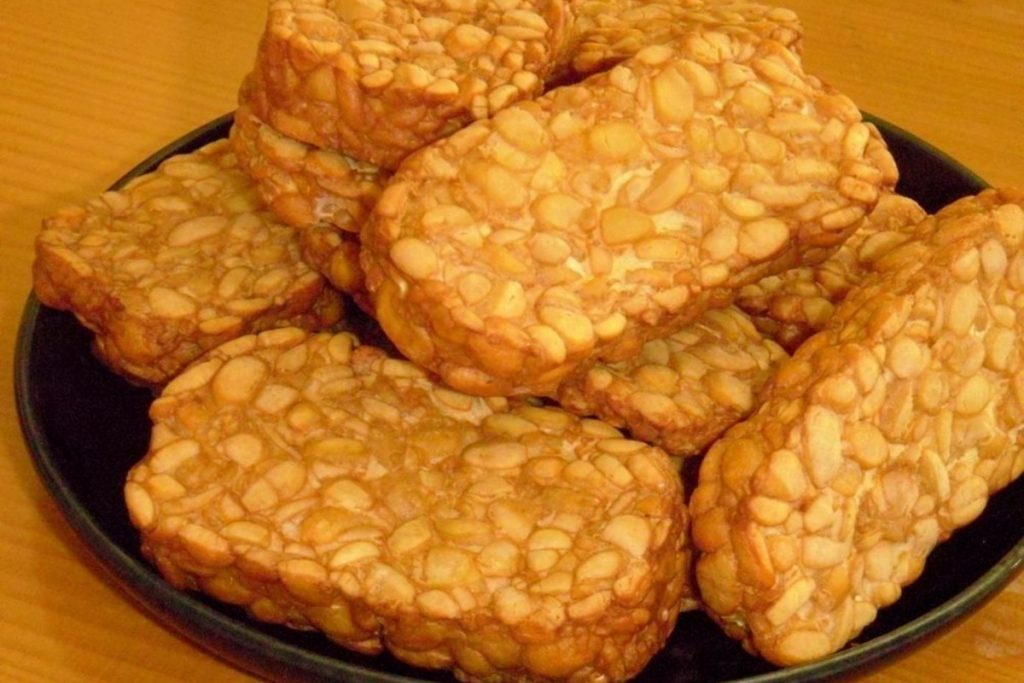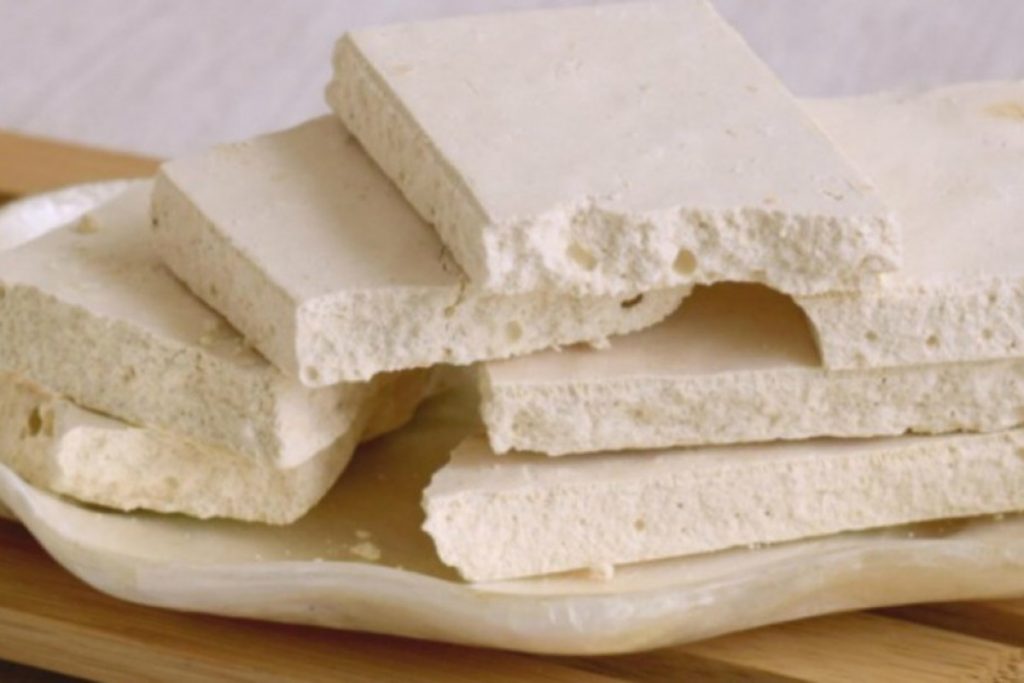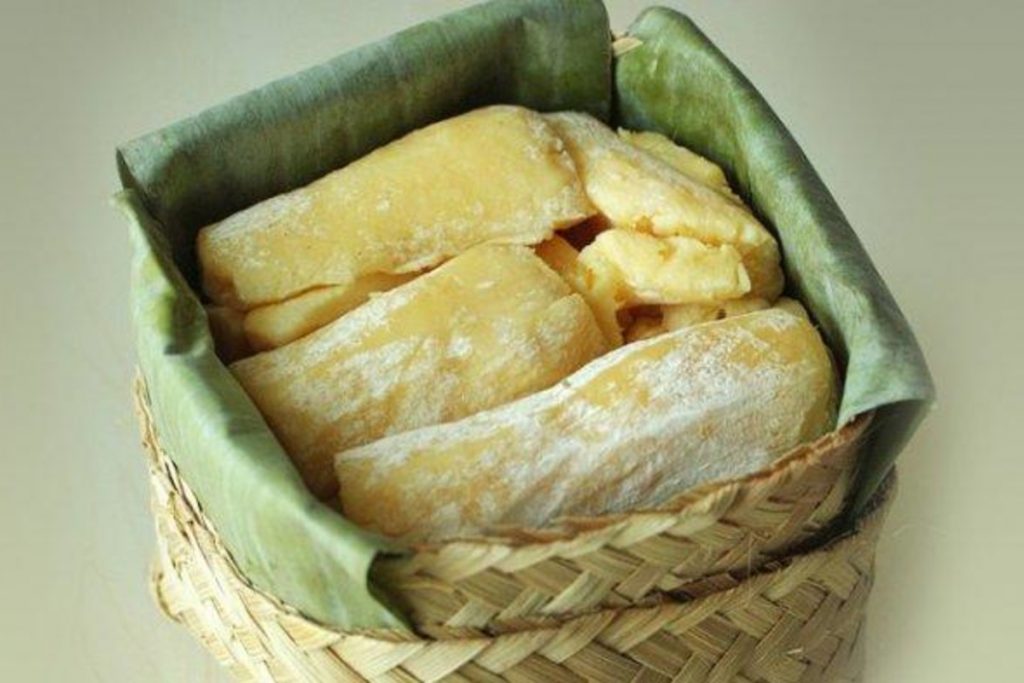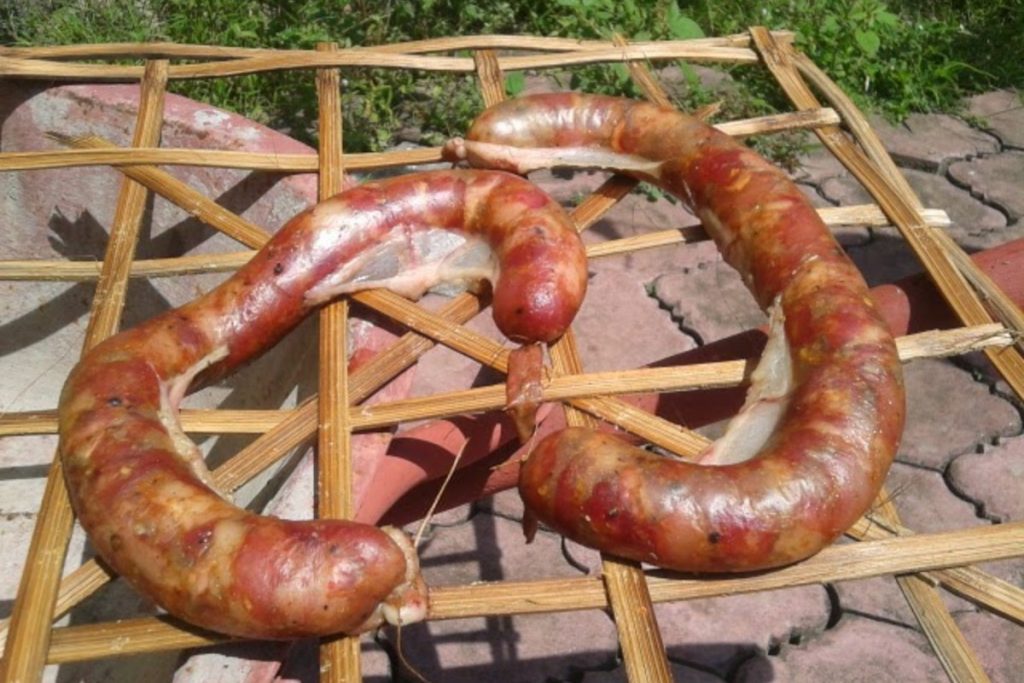Indonesian fermented foods highlight the utilization of an assortment of raw materials, including soybeans, grains, vegetables, fruits, tubers, and fish. In certain parts of Indonesia, meat and milk, particularly mare milk and buffalo milk, have been utilized generally as raw materials for fermented items.
As far as the maturation measures, Indonesian fermented foods can be sorted into lactic fermentation (vegetables, fruits, cassava, milk, meat), alcoholic fermentation (cassava, rice), mold fermentation (peanut press cake, soybean), and high salt fermentation (soy sauce, fish).
In this article, we will explore some Indonesian fermented foods that have been enjoyed for quite a long time. Thus, right away, let us start our journey.
A List of Indonesian Fermented Foods
- Tempe

Tempe is likely the most famous fermented food in Indonesia. It is one of the most loved protein sources for veggie lovers.
Tempe is created by fermenting yellow soybeans with R. arrhizus, Rhizopus oryzae, and R. microspores oligosporus microbes. Generally, the fermentation of tempe is directed in plastic, banana leaf or waru leaf wrap.
Speaking of wraps, here are types of Indonesian traditional food wrappers.
- Dadiah

This delight is fermented milk from West Sumatra. It is generally named as conventional yogurt of Minangkabau.
Dadiah is made of fermented fresh buffalo’s milk that has been sifted for one to two days in a bamboo tube. Dadiah has a rich surface with sharp flavor.
As a rule, it is served raw or alongside rice and sambal. Individuals additionally prefer to add sugar and ice cubes to it.
Despite the fact that it is not created with a high cleanliness standard, dadiah is okay for consumption.
- Pakasam

This is a fermented food from the Banjar clan of South Kalimantan. It is made of freshwater fishes like catfish, parrotfish, golden fish, or tilapia fish.
After the fish has been cleaned totally, it is then salted in a salt formula for 48 hours. From that point onward, fishes will be depleted and blended in with glutinous rice and fermented for seven days in a tight-fixed plastic container.
Normally, individuals will cook pakasam with chilies and sugar.
- Brem

Brem is made of fermented glutinous rice with the assistance of Saccharomyces cerevisiae yeast. Presently, there are two types of brem: solid and liquid brem.
Brem that comes from Madiun, East Java has white-yellowish tone, sweet and sour flavor and comes in a square shape. Meanwhile, brem that comes from Wonogiri, Central Java is sweet, has white tone, and comes in round, slight cuts.
Brem is claimed to be specialty gifts from the two urban areas. It is definitely one of the must-buy snacks in Indonesia.
- Oncom

Oncom is a fermented food from the Sunda clan of West Java and is extremely famous among Sundanese.
There are two sorts of oncom: red oncom and black oncom. Red oncom is produced using bungkil tahu (soy oilcake from tofu item) and fermented utilizing Neuspora intermedia var oncomensis fungi.
Black oncom, on the other hand, is produced using peanut oilcake that is at times blended in with custard and cassava dregs. It takes two to three days to ferment oncom.
Typically, this item is prepared in different sorts of nourishments, for example, sambal oncom, comro, and oncom chips. You might want to find out about the famous Sundanese foods in Bandung.
- Dangke

This is a fermented food from Enrekang, South Sulawesi. It is made by heating up buffalo’s milk, salt, and a bit of papaya’s sap.
The fluid at that point will be separated and shaped utilizing coconut shells. At the point when it is set, dangke has a tofu-like surface with cheddar-like flavor.
It tends to be devoured raw or singed and served alongside rice.
- Tape

This food is especially connected with Bandung. You will discover the roadside stalls selling this delicacy while in transit to Bandung.
Peuyeum, otherwise known as tape, is a food produced using fermented cassava. To make this food, cassava should be steamed until half-cooked and afterward sprinkled with yeast before put away in a tight-fixed container.
It is then permitted to ferment for two to three days.
- Terasi

Indonesian shrimp paste, otherwise known as terasi, is generally fermented and is broadly devoured by Indonesian individuals. Terasi is delivered by using endogenous microscopic organisms from raw materials as starters.
Because of the variety in endogenous microbes during creation, terasi of differing quality is delivered.
- Urutan

Urutan is a Balinese conventional fermented hotdog which is made of lean pork and fat blended in with sugar, spices, and salt. The blend is stuffed into a cleaned pig intestine and fermented under uncontrolled conditions during sun drying for five days.
The examination indicated that lactic acid microbes are the dominating microorganisms during the fermentation of urutan.
So, these are 9 Indonesian fermented foods. While you are at it, check out the local foods from West Sumatra and the most delicious foods in Madura, Indonesia.
